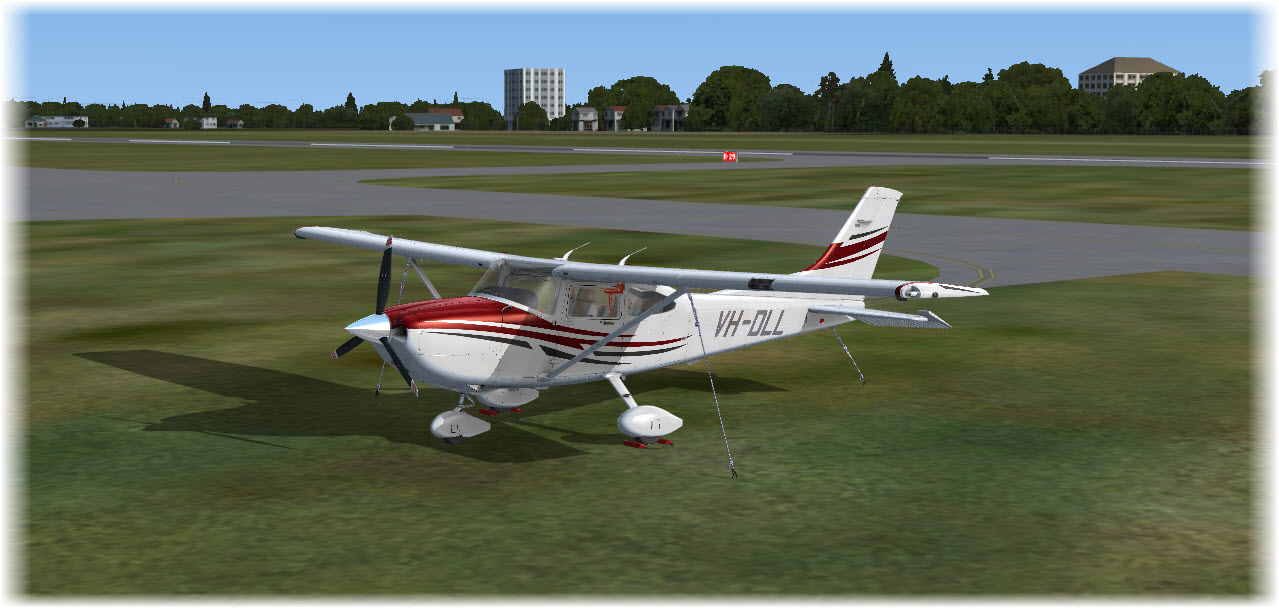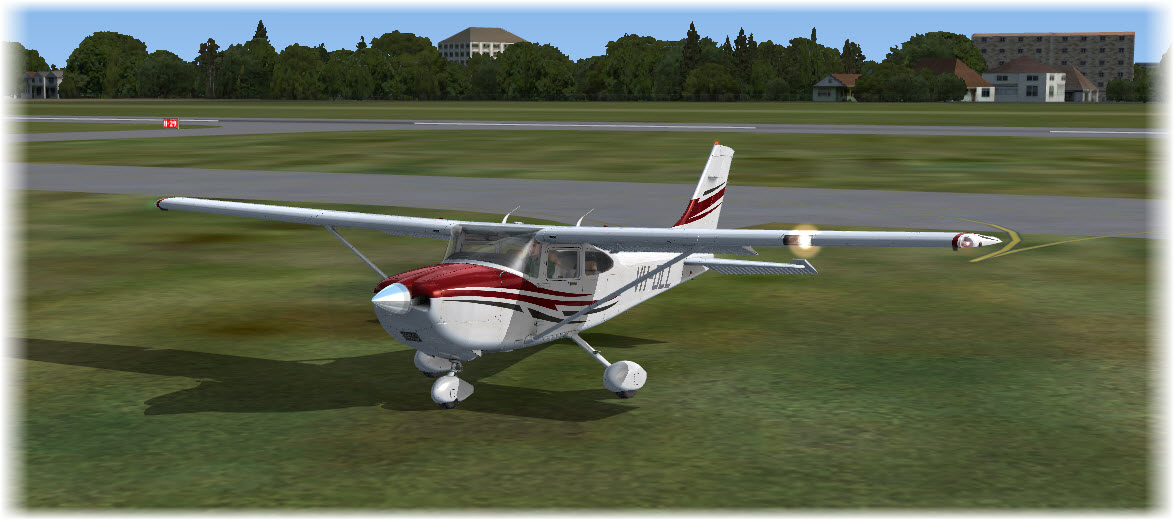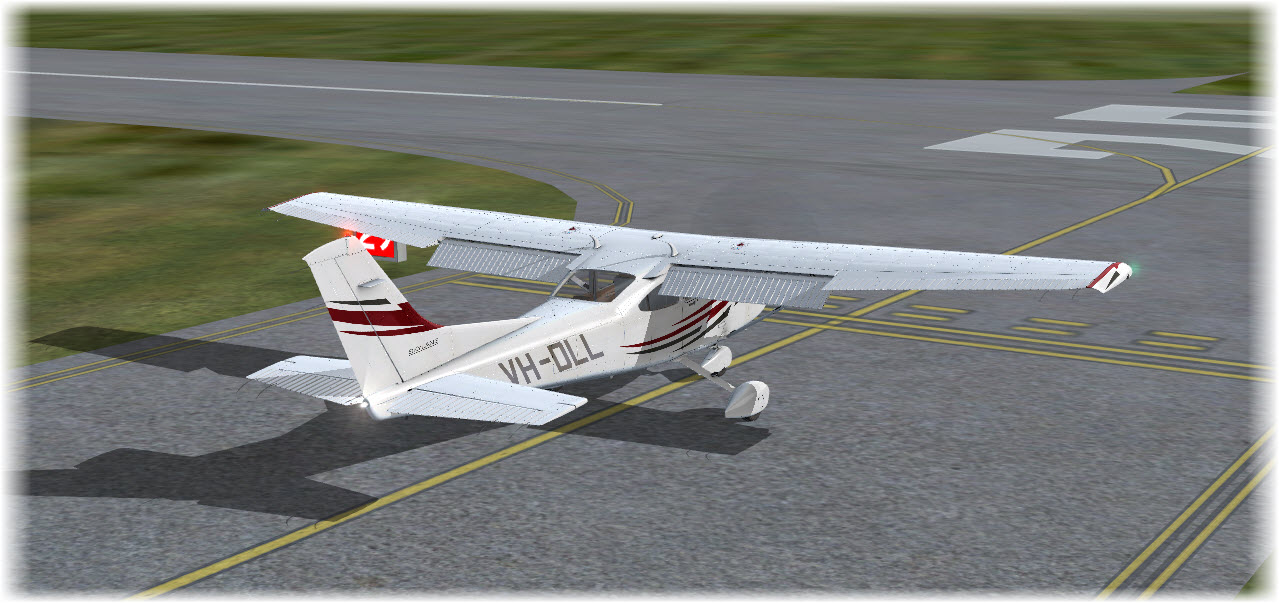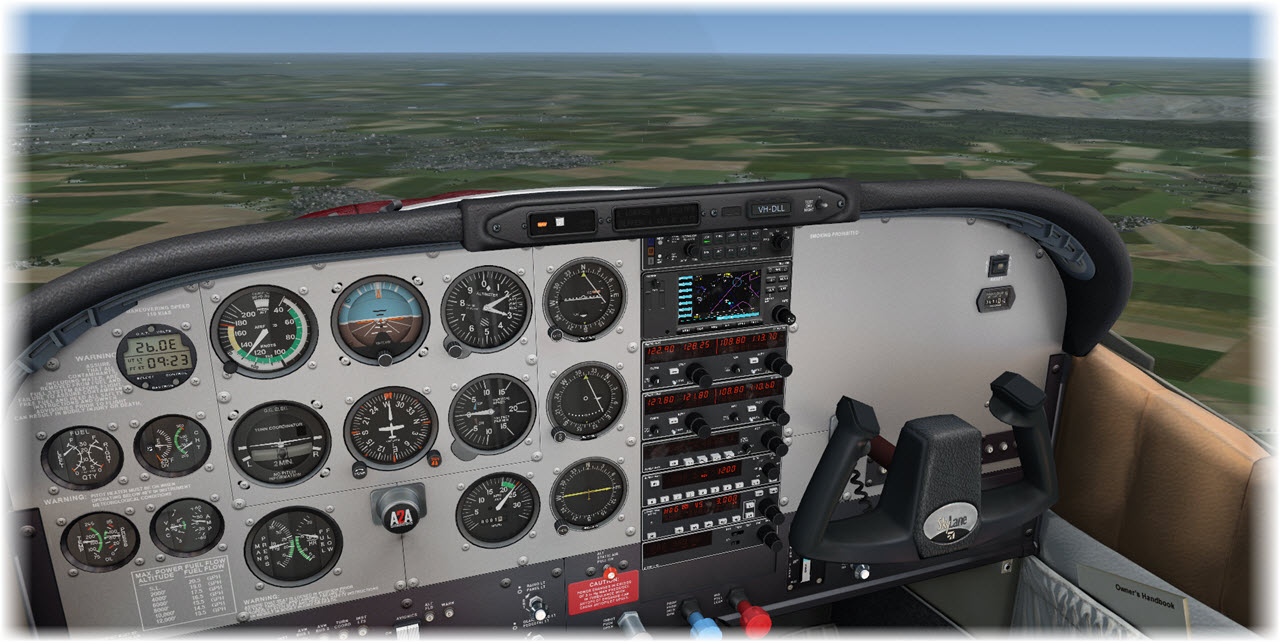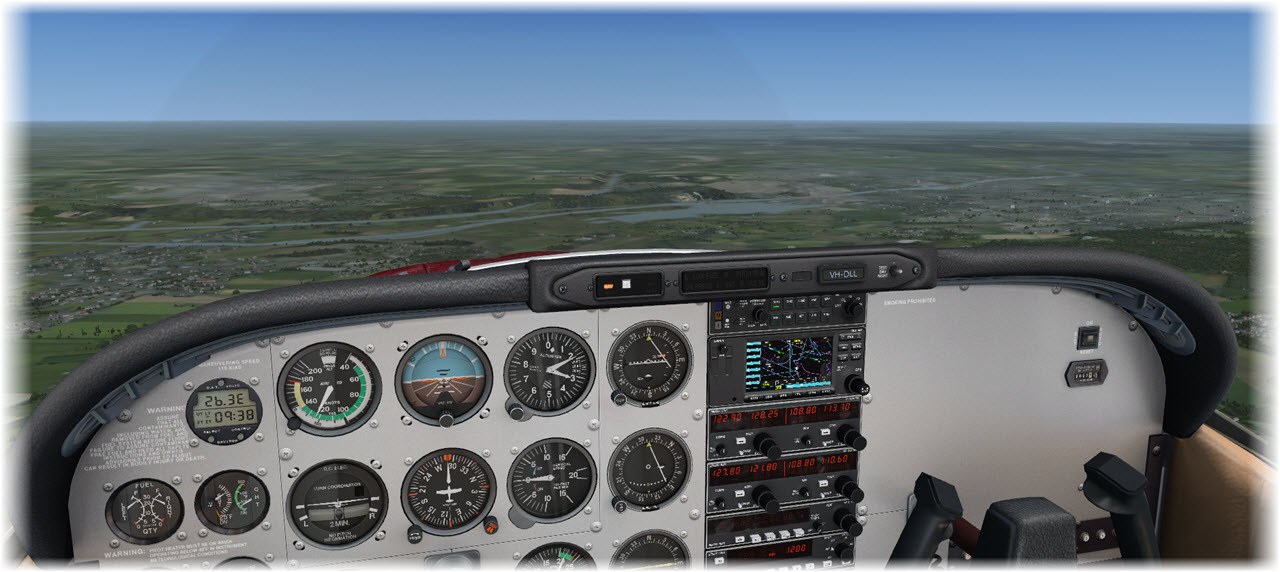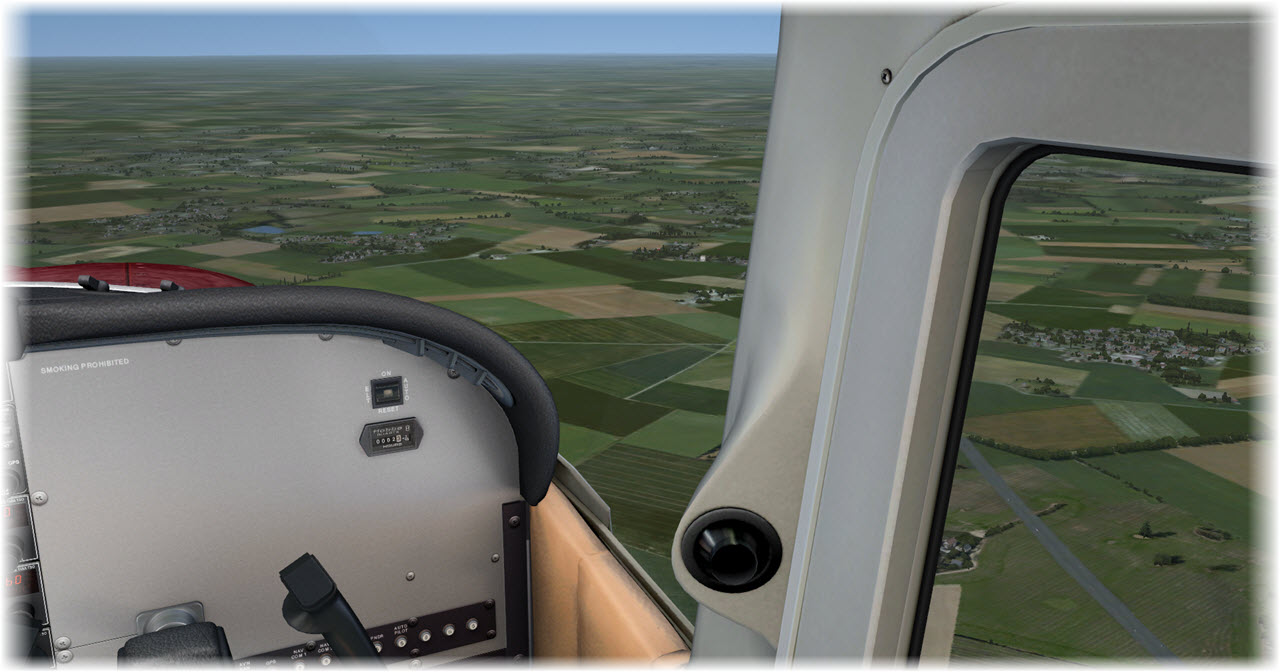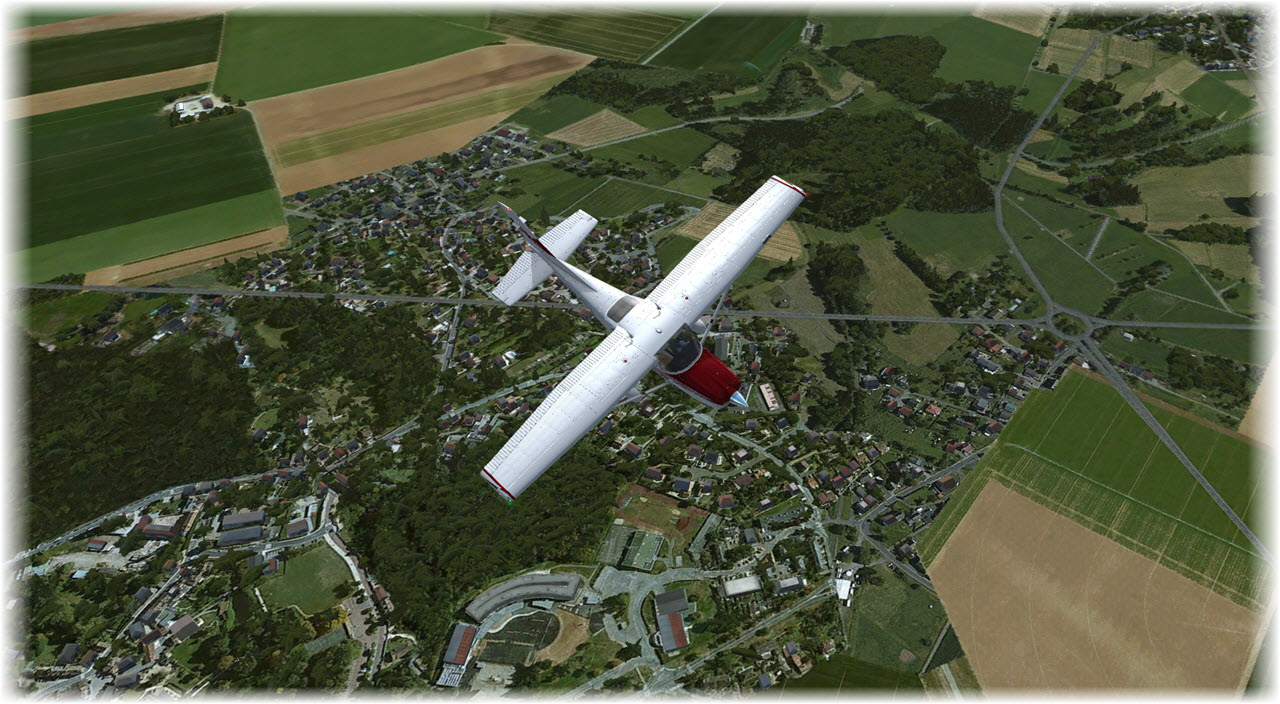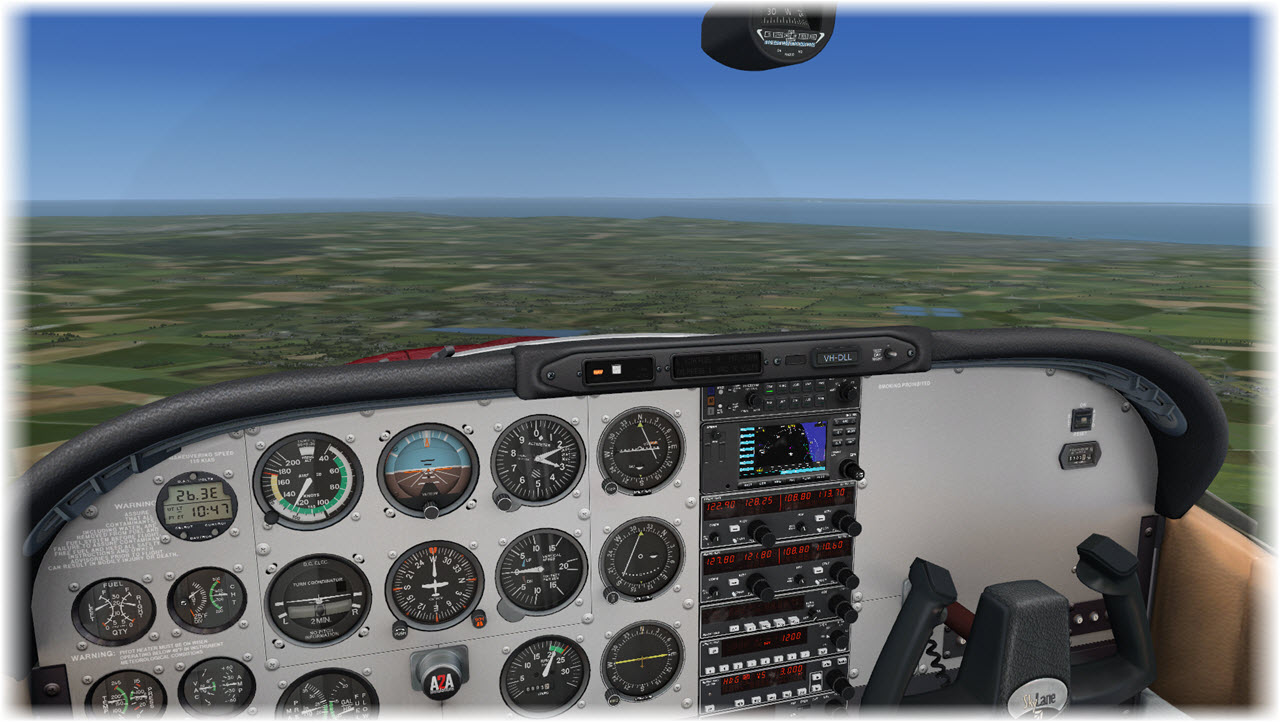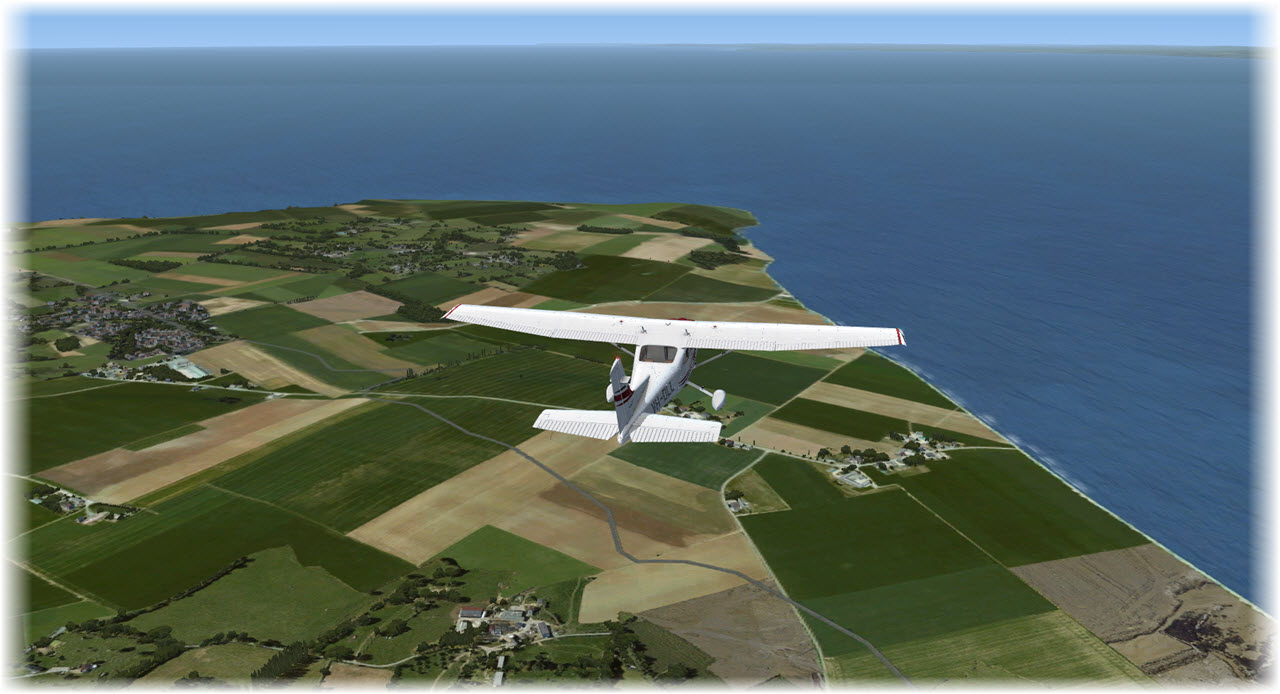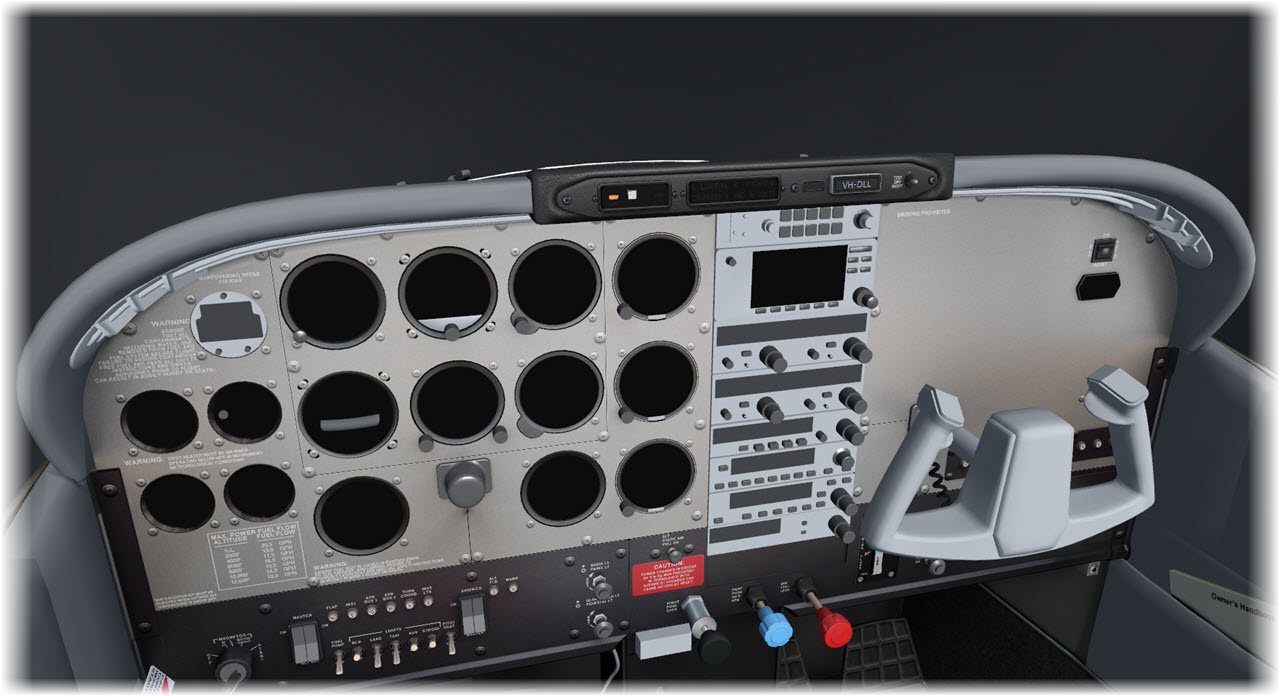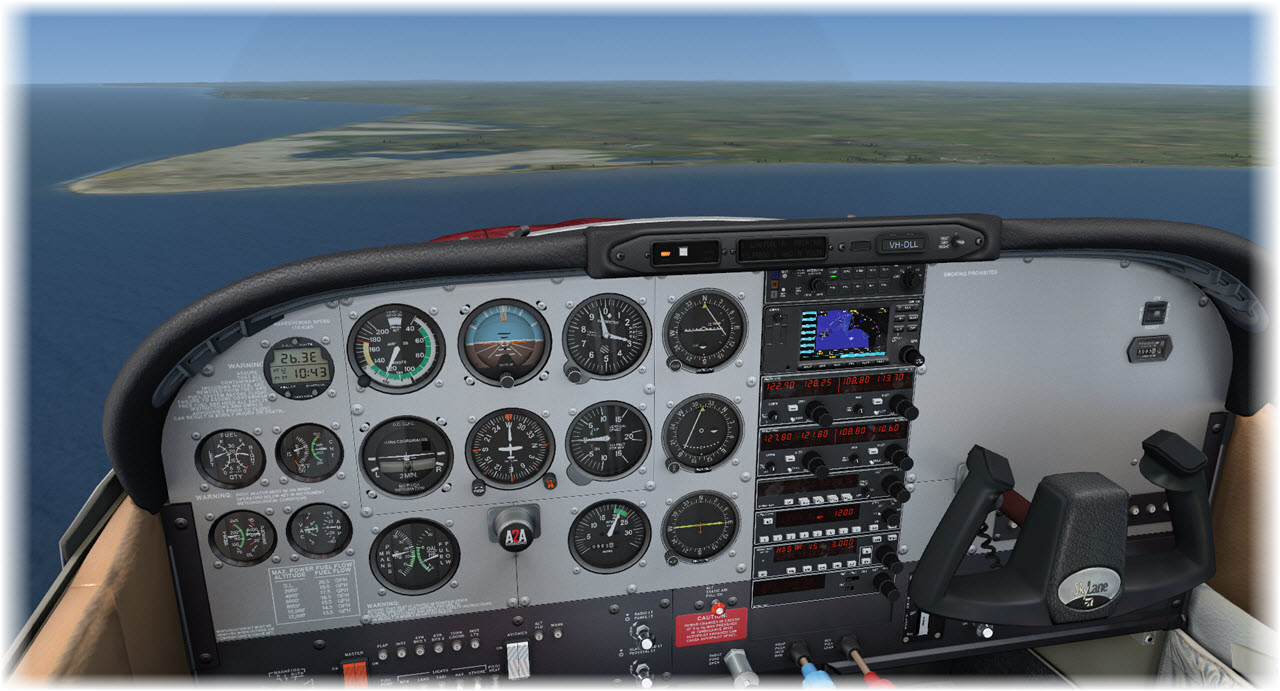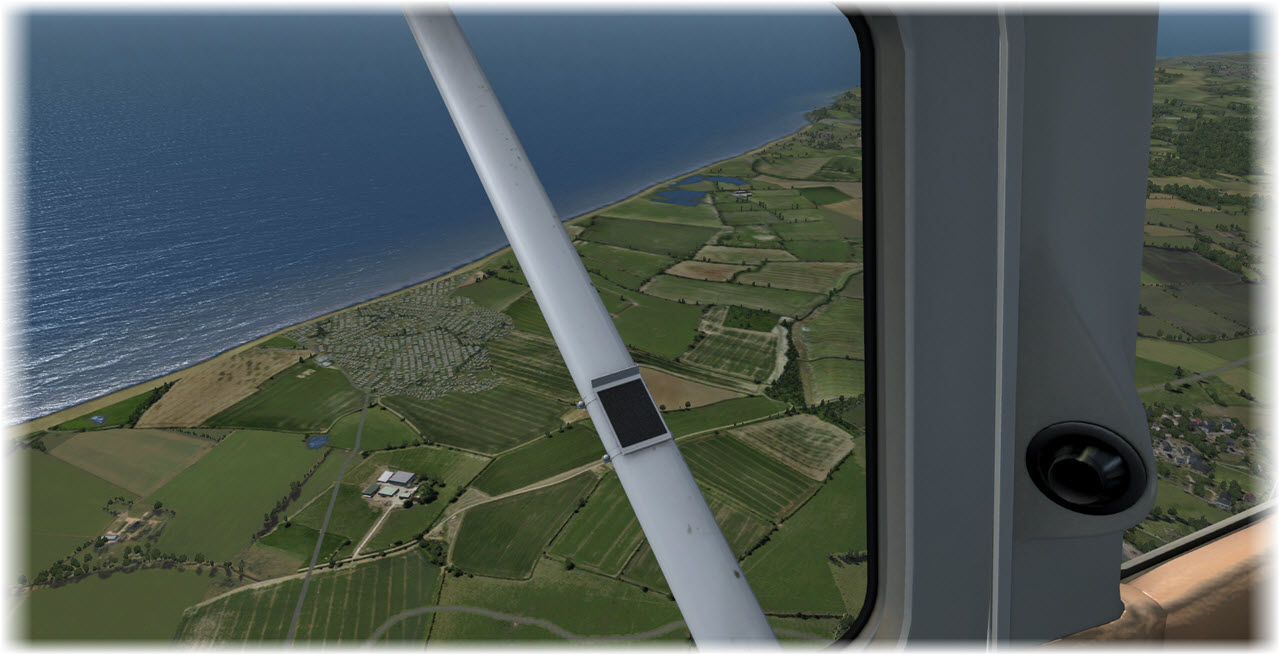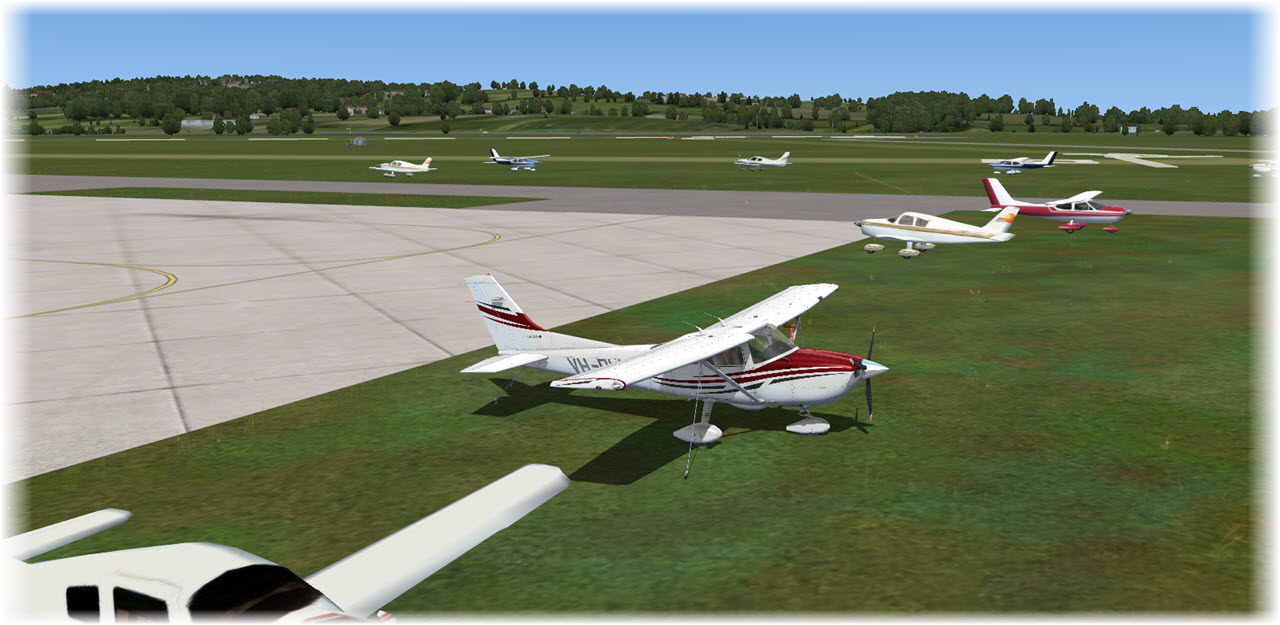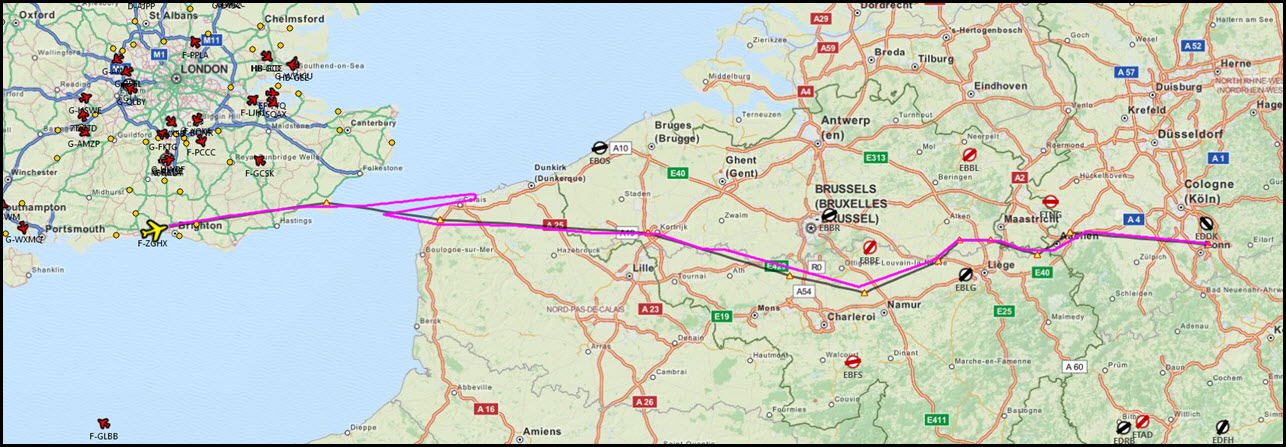I have been away from one of my hobbies for about a year or two now – but the recent sale of Flight Simulator X: Steam Edition made me rethink this and get back into it (at least at a certain level).
In the past, I was an all Airbus fan – loved flying the big birds with their complex cockpits but in the end, I had too little time to be in front of the Flight Simulator to handle those machines reliably. It is a matter of practicing, not only a matter of a good machine, good add-on’s and good check lists…
Now, with FSX: Steam Edition back on my computer (which now is also an upgraded hardware with an Intel i7-4770 Processor, 32 GB if RAM and an nVidia GeForce GTX 760) I decided to stay with the little birds, the Cessna’s and the likes.
There were a couple of decisions to make to not overload the new installation – obviously, FSX: Steam Edition needs to be installed, besides that, I have opted for
- Plan G3 by Tim Arnot as a Flight Planning / Moving Map tool,
- A2A’s new Cessna C182 Skylane as aircraft, and
- a mix of European Sceneries from ORBX and others.
So this little “maiden flight” will combine some of these products into a little “joint review”.
Notes on the Installation
I don’t want to cover the installation here – but just on a side-node, especially the ORBX Products do require a lot of attention to detail when performing the installation and then patching the installed base versions. You don’t pay attention, you do get trouble… mostly of the unpleasant visual kind…
The “Maiden Flight” – EDKB (Bonn Hangelar) to EGKA (Shoreham)
For various reasons, the “maiden flight” in the new environment is from Bonn Hangelar to the southern coast of the UK. The Cessna is sitting in the General Aviation area in Hangelar, waiting for it’s pre-flight inspection.
One of the neat things about the A2A Cessna is that it allows a complete “walk-around” with a build-in check-list for the external checks. As much as I remember my last flight, this is “to the point”.
The C192 Pilot’s Manual offers a very detailed set of check-lists – the Cabin Check-List and the Before Starting Engine Check-List are next on my list. With an aircraft add-on so detailed, you cannot get it into the air (or rather: you should not!) without obeying the proper procedures. We are now ready to start the engine.
The Start Engine Check-List will bring the Lycoming 10-540 to life. One thing I notice: it would be great to print the check-lists rather than have them open on a second monitor. Any a yoke with appropriate engine controls will greatly add to the experience.
This time, I managed to get the engine started without “drowning” her in her own fuel. Progress made 😉
Taxiing to the Runway 29 and holding, I execute the Before Takeoff Check-List. Again, this is “to the point” and my Cessna and me, we are ready to go. Outbound course from Hangelar is 275° which will take us into the Nörvenich area and then on to Aachen-Merzbrück as our first waypoint.
Leaving Hangelar takes me over the Rhine river and then over the little village of Sechtem where I once lived. Here, the quality of ORBX’s openLC Europe becomes obvious – the boundaries of the village, the railroad, the streets, and even the farm areas outside are meticulously recreated.
Getting closer to Aachen shows the pits of the brown coal mining sites in the north, the city area and (in the distance) the airbase at Geilenkirchen where NATO is operating the E-3a Sentry AWACS aircraft from.
I am following my course to about Eschweiler, them making a turn to 240° and just south of Aachen back to 270° to avoid the control zones of Liege and Maastricht. A close-up shot of the Cessna’s main panel shows the attention to detail (and fine graphics) the A2A Team has put into the aircraft.
Now, I have chosen the flight route not “randomly” – of course, I wanted to take out the Cessna but I also wanted to prepare a (possible) route for this year’s “old men’s flight” with my friend Ernst. And there is a reason for the tour: this is the very area I am currently covering in a discussion of my Grandfather’s War Diary from 75 Years ago (if you are interested, click here).
I am now approaching the Albert Canal south of Maastricht with the former Fort Eben-Emael. Flight Simulator, of course, show’s nothing of the history of the place but a very nicely shaped landscape!
Turning slightly to the left, back to 270°, my next waypoint is the city of Tongeren. Passing the city and looking at the route ahead, I am deciding on a south-westerly course, roughly 230° to Waremme. This will get me around the control zones of Brussels, Beauvecain, and Charleroi.
From above, the ORBX openLC Europe Textures are looking quite nice – beautifully recreating a European landscape in Summertime. West of Waremme, crossing the highway, a slight course correction is required, new course is 250°.
Down below me, around Hannut, one of the first major tank battles of World War II was fought – the Battle of Hannut. At Gembloux, I am reaching the southern end of the control zones around Brussles, turing west again, to 285°. Next waypoint: Kortrijk in about 60 miles.
I thought, I’d give you a “top-down” look to emphasize the beauty of the textures below me… the next 60 miles are “straight forward”, except a little correction to get back on track near Ronse. Over Kortrijk, I am setting for 270° to the city of Ypres. Meanwhile, from up here, the North Sea comes into view – still at the horizon but I am getting closer to the coast.
Below me, Flander’s Fields. Down there, some of the most fierce battles of Word War I were fought. Very few areas in the world can – if one allows himself to be taken to history – combine hobby and history so closely. Below me – the city of Ypres.
Now, it is off to the coast which I will cross between Calais and Cap Gris Nez. Another 55 miles of flight, then a hop over the channel and along the coast to Shoreham. Near Calais, the British Coasts starts to shape out of the mist – the White Cliffs of Dover.
At Cap Gris Nez, I am leaving continental Europe, heading out over the British Channel and for the Isles. A 30 Mile hop during which I do hope to not run into any issues with my little bird…
… and right here, FSX: Steam Edition crashed on me… which allows me to cover a few of the issues I had run into during the flight:
First of all, an occasional delay in texture loading of the Cessna’s Cockpit resulted in some very “rare” view of the front panel when switching views.
It’s not bad – it takes a few seconds to recover and then all is fine again. Next, I keep loosing my connection to my USB Saitek X52 Pro occasionally – all that helps then is to swt FSX to full-screen mode and back which re-enables the stick… wonder why. Last but not least, the Crash To Desktop I just experienced – well, that can happen but it should not.
I resume the flight – or rather: I start a new flight! – from Calais, quickly heading south to catch up with my previous location. From there, it is again course west until I reach the British Isles near Lydd.
Here, it is not only flying over the United Kingdon, it also means a switch of Scenery, from ORBX openLC Europe to ORBX England. The scenery is much more detailed than the general openLC Europe (which is already good!) but now, the nitty gritty fine details ofthe country side are worked out to the extend.
I am flying along the southern coast of England, towards the city of Brighton. Brighton itself is famous for its seashore but to me, it seems to be too dense, too packed.
Finally, I am circling the airport, Shoreham, for a final approach on Runway 03 (the grass runway), land, taxi to parking and put my Cessna right between the other GA-Aircraft sitting there, waiting for my next leg up to Scotland.
Conclusions
A couple of closing comments: first of all, it’s good to be back in a cockpit and I enjoy the relatively low learning curve of the Cessna. No comparison to an Airbus, no obligations for frequent flights.
ORBX openLC Europe and ORBX England are both worth having – patched to the latest releases and with a few glitches to sort out during installation, they are both tremendously upgrading the VFR experience.
The A2A Cessna C182 is really worth flying – a beautiful aircraft, nicely modeled, neat graphics and a nice inflight feeling… not a waste of money, I would say. From here, it is now “up north, to Scotland”!


